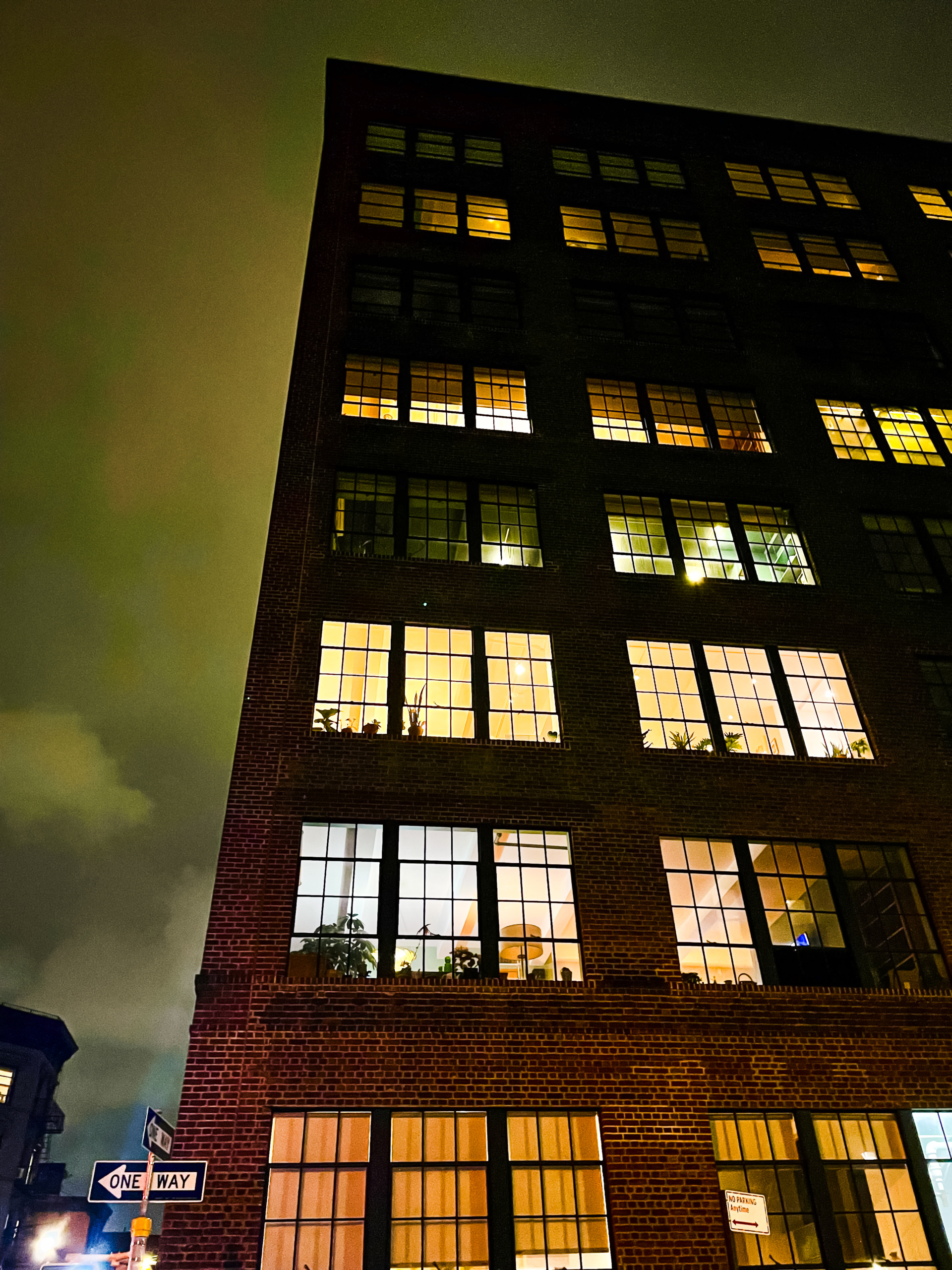
There are a lot of people living on top of one another here in NYC, breeding a sort of closeness that doesn’t exist in the suburbs. As I open my eyes, I judge the outdoor noises against my own. The sounds around me echo a common rhythm.

The iPhone alarm next door can be heard through the paper-thin walls, going off at the same time as mine—snoozed once, twice, then finally stopped. Upstairs, someone rushes out late for work, their door slamming shut and footsteps shuffling down the stairs. The smell of toast wafts from the neighboring apartment, a sign of a quick breakfast, just like mine.
In the solitude of our respective bedrooms, the illusion of being alone dissipates, replaced by the realization that our lives echo one another.
Getting dressed, I'm reminded that the gap between my window sill and blinds is a place where bystanders can peer in and evaluate their lives against my own. The voyeuristic nature of city life becomes apparent; I know because I do it too—glimpsing into others' homes when walking the streets, observing the work on their computer screens, the food they order, and the patterns on their pajamas. You’d be surprised how few people turn their lights off, inviting the world into their most intimate moments. We’ve normalized it—the visual intrusion, comparing, contrasting, bending, and breaking in with our eyes to see how others make these concrete cages feel like homes.

Through these visual cues, we inadvertently invite the world into our homes, breaking down the barriers that separate us. In the diverse array of personal touches that adorn our living spaces, a common thread emerges—shared humanity that unites us despite our apparent differences: mismatched throw pillows, small potted plants, and succulents, flat screens in the center of framed movie posters, art prints pinned up, record players and vinyl, worn-out leather armchairs, soft throw blankets, whiteboards with to-do lists, shelves of board games and puzzles, incense, cork boards on exposed brick covered in old Polaroids.
It's a reminder that, in the small details, we find a common ground that brings us closer, no matter how vast the city may seem.
The very things that make our homes uniquely ours are the same elements that connect us. Whether it's book stacks, the glow of neon signs, or candles scattered about, these common elements create a sense of connection. Our homes, a reflection of our shared experiences, show that, despite the city's size, our lives mostly look the same. It's a reminder that, in the small details, we find a common ground that brings us closer, no matter how vast the city may seem.
When I get home to end the day and close my blinds, I’m met with a stare on the other side of the street—another girl, in another bedroom, shutting hers too. We’re both three stories high, calling it a day, sharing the very same bedtime. We both think we’re safe from the outside world, but we’re wrong. Her television screen plays the same show I just binged, and her bedside table features takeout from the spot I get every night of the week. Maybe we’d be friends even.

Some nights, I peek out and catch her taking a cigarette break on the fire escape, sitting alone in the middle of her bed with her laptop’s glow as her only source of light, talking on the phone, pacing her floors, sitting at her desk toggling between getting work done on her laptop and scrolling on her phone, reluctantly doing an at-home exercise, reading a book for a few moments then putting it down, staring out the window, holding a mug probably filled with coffee. In the solitude of our respective bedrooms, the illusion of being alone dissipates, replaced by the realization that our lives echo one another.
It’s in the shared life of the stranger directly in front of me, in what feels like right behind my desk in my bedroom where I’ve come to realize that even when I’m alone, there's a feeling that I’m not. The illusion of solitude is broken when that gaze from my neighbor across the street meets mine. No one is immune. If we pay attention, we can see our routines mirror each other.
Though physically apart, these shared moments suggest that in a city of millions, we're more alike than we realize.
FEED MORE
Published by: Sammy Friedman in Relatable




Comments are closed.